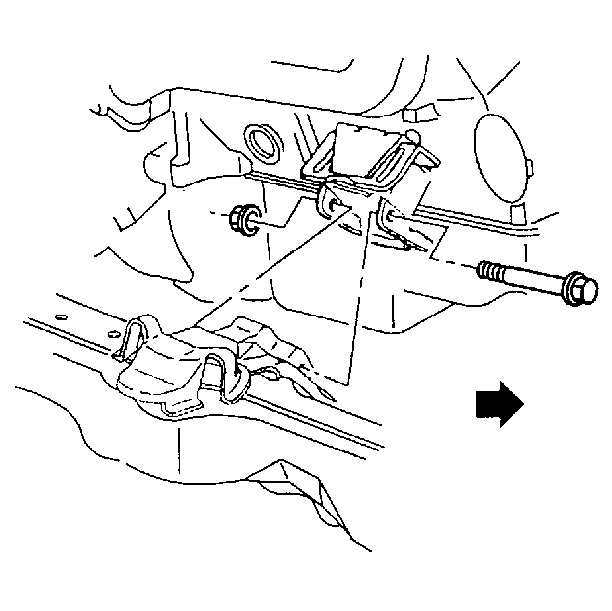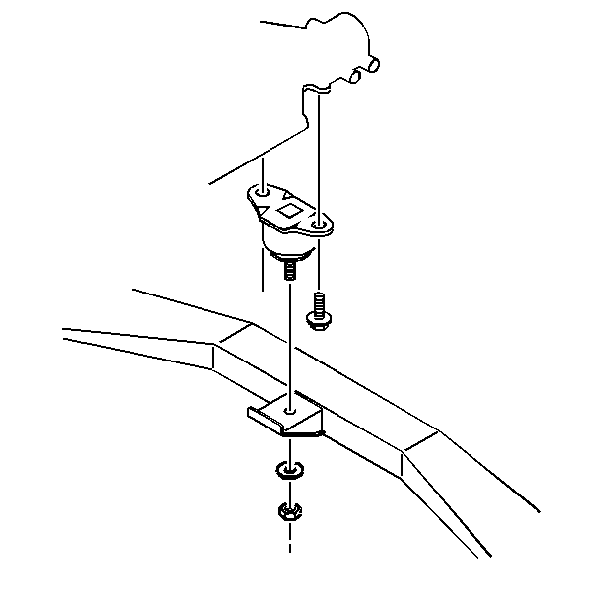Engine Mount Inspection Front

Notice: Broken or deteriorated mounts can cause misalignment and destruction
of certain drive train components. When a single mount breaks, the remaining
mounts are subjected to abnormally high stresses.
Notice: When raising or supporting the engine for any reason, do
not use a jack under the oil pan, any sheet metal, or the crankshaft pulley.
Lifting the engine in an unapproved manner may cause component damage.
- Raise the engine in order to complete the following tasks:
| • | Remove weight from the mount. |
| • | Place a slight tension on the rubber cushion. |
| • | Observe the mount while raising the engine. |
- Replace the mount if the following conditions exist:
| • | Heat check cracks cover the hard rubber surface. |
| • | The rubber cushion is separated from the metal plate of the mount. |
| • | There is a split through the rubber cushion. |
- If the mount is loose, lower the engine and tighten the bolts
or the nuts to the engine frame or the bracket.
Engine Mount Inspection Rear

Notice: Broken or deteriorated mounts can cause misalignment and destruction
of certain drive train components. When a single mount breaks, the remaining
mounts are subjected to abnormally high stresses.
- Push up and pull down on the transmission extension housing. Observe
the transmission mount.
- Replace the mount if the following conditions exist:
| • | The rubber cushion is separated from the metal plate of the mount. |
| • | The mount has bottomed out. |
| • | The extension housing moves up but not down. |
Notice: Use the correct fastener in the correct location. Replacement fasteners
must be the correct part number for that application. Fasteners requiring
replacement or fasteners requiring the use of thread locking compound or sealant
are identified in the service procedure. Do not use paints, lubricants, or
corrosion inhibitors on fasteners or fastener joint surfaces unless specified.
These coatings affect fastener torque and joint clamping force and may damage
the fastener. Use the correct tightening sequence and specifications when
installing fasteners in order to avoid damage to parts and systems.
- If a mount is loose,
tighten the bolts or nuts that attach the mount to the transmission or to
the crossmember.
Tighten
| • | For the transmission mounts to transmission bolts, tighten the
bolts to 47 N·m (35 lb ft). |
| • | For the transmission mount to support nuts, tighten the nuts to
47 N·m (35 lb ft). |


